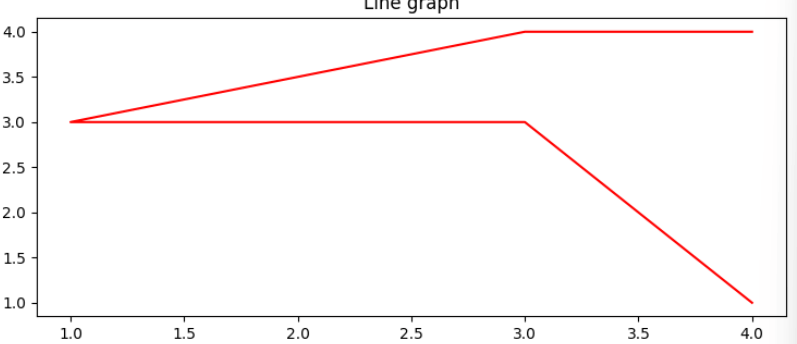How to Plot an Array in Python Using Matplotlib?5 Mar 2025 | 3 min read Introduction:Graphs are used to visualise data when plotting arrays in Python using Matplotlib, which facilitates the comprehension of relationships and trends. You can produce understandable and instructive visual representations of your data by following a few easy procedures, like configuring plot parameters, defining arrays, and importing the required libraries. In Python, we may plot an array by following these steps:
Example 1: Output:  Explanation: This Python software generates a line graph by using Matplotlib and NumPy. It first imports the required libraries and then configures the plot's auto layout and figure size. Subsequently, it constructs an array x and arranges its components to form an additional array y. The script adds a title to the plot and plots x against y with a red line. Finally, plt.show() is used to display the graph. The relationship between the initial array, x, and its sorted version, y, is depicted in the following line graph. Example 2: Output:  Explanation: This Python software generates and displays a sine wave using matplotlib and numpy. It calculates the sine values of each of the 100 values that are generated, which span from 0 to 10. The sine wave is shown on a plot by round markers and a blue dashed line. For easier reading, the plot has a title, axis labels, and a grid display. Lastly, the plot is rendered and displayed by calling plt.show(). Conclusion:You can efficiently plot arrays to visualise data trends by using Matplotlib and NumPy. Adding labels, colours, and sizes to the plot improves readability and sheds light on the connections between the data points. A simple method for using these libraries to create a line plot is shown in the code sample below. Next TopicHow-to-run-a-python-script-every-minute |
In the realm of statistics, the median stands as a crucial measure of central tendency, offering insights into the distribution of data that go beyond the average. Python, a popular language in data science and analytics, provides a robust toolset for statistical operations through its...
3 min read
A powerful and diverse programming language called Python supplies users with many sophisticated instruments and modules making tough operations easier to perform. However, the itertools module contains some highly effective and space economical instruments for manipulation over iterators. An interesting thing I found in this...
4 min read
Chaquopy could be a Python SDK for Android that empowers designers to integrate Python into their Android apps. Chaquopy permits you to make energetic and flexible portable applications by combining the qualities of Java and Python. This integration opens up a wide range of alternatives,...
4 min read
In the following tutorial, we will learn about the difference between the Pandas and Polars in the Python programming language. So, let's get started. Understanding the Pandas Library Pandas is one of the popular python libraries for handling and manipulating data. Most of the time I'll be using it...
11 min read
? Many programming tasks need to randomly choose options based on weighted probabilities. This is common in coding work. Python's random module has functions for making random numbers but does not naturally support choices that depend on weight. But, this task can be done by using...
4 min read
? Dividing your Python code into smaller, more manageable modules is a smart practice when working on a large project or if you wish to reuse methods or classes across some files. After dividing a module, you can use the import statement to introduce functionality into...
4 min read
Method chaining, also known as method cascading or fluent interface, is a programming paradigm that enables the sequential invocation of techniques on an item in an expression. It affords a concise and expressive manner to perform a sequence of operations on an object without the...
11 min read
Introduction: Python, with its elegant syntax and powerful data structures, provides developers with various tools to manipulate and manage data efficiently. When working with dictionaries, a fundamental data structure in Python, developers often encounter two methods for accessing key-value pairs: dict.items() and dict.iteritems(). While both methods...
4 min read
The process of serialization is used when we have to store a tree data structure in a file. We can afterwards restore this tree as per our needs. The only condition is that the structure of the tree should be maintained. Deserialization is the complete...
7 min read
Introduction In the present information driven world, the capacity to store, recover, and control information effectively is vital for some applications. Python, with its broad environment of libraries, gives strong apparatuses to working with information bases and SQL. Whether you're constructing a web application, an information...
9 min read
We request you to subscribe our newsletter for upcoming updates.

We provides tutorials and interview questions of all technology like java tutorial, android, java frameworks
G-13, 2nd Floor, Sec-3, Noida, UP, 201301, India
